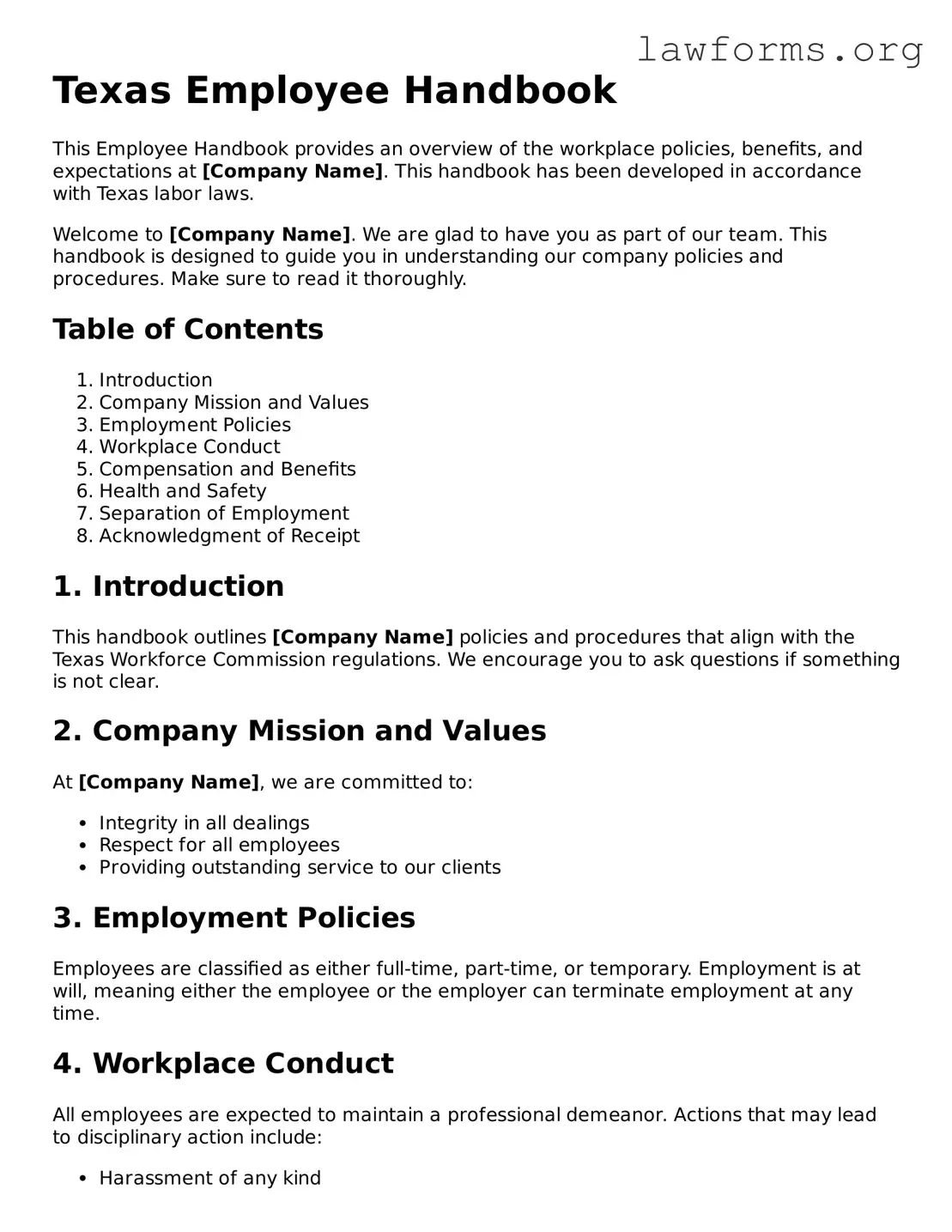Texas Employee Handbook
This Employee Handbook provides an overview of the workplace policies, benefits, and expectations at [Company Name]. This handbook has been developed in accordance with Texas labor laws.
Welcome to [Company Name]. We are glad to have you as part of our team. This handbook is designed to guide you in understanding our company policies and procedures. Make sure to read it thoroughly.
Table of Contents
- Introduction
- Company Mission and Values
- Employment Policies
- Workplace Conduct
- Compensation and Benefits
- Health and Safety
- Separation of Employment
- Acknowledgment of Receipt
1. Introduction
This handbook outlines [Company Name] policies and procedures that align with the Texas Workforce Commission regulations. We encourage you to ask questions if something is not clear.
2. Company Mission and Values
At [Company Name], we are committed to:
- Integrity in all dealings
- Respect for all employees
- Providing outstanding service to our clients
3. Employment Policies
Employees are classified as either full-time, part-time, or temporary. Employment is at will, meaning either the employee or the employer can terminate employment at any time.
4. Workplace Conduct
All employees are expected to maintain a professional demeanor. Actions that may lead to disciplinary action include:
- Harassment of any kind
- Theft or dishonesty
- Insubordination
5. Compensation and Benefits
Employees will receive compensation based on their position and market rates. Benefits may include:
- Health insurance
- Paid time off
- Retirement plans
6. Health and Safety
We prioritize the health and safety of our employees. Report any unsafe conditions to management immediately. Regular training will be provided for workplace safety practices.
7. Separation of Employment
In the event of termination, whether voluntary or involuntary, employees must complete an exit interview. Final paychecks will be issued in accordance with Texas law.
8. Acknowledgment of Receipt
By signing below, you acknowledge that you have received and read the Texas Employee Handbook.
Employee Name: _____________________
Signature: _________________________
Date: _____________________________
